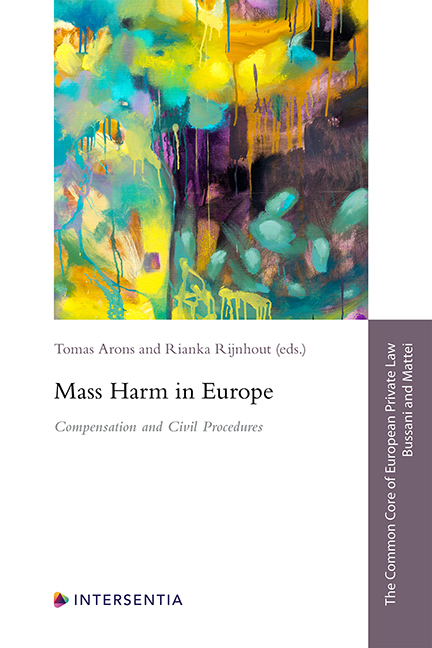Summary And Conclusions
Published online by Cambridge University Press: 03 April 2024
Summary
INTRODUCTION
The overarching aim of this Common Core project on mass harm is to understand how tort law responds in mass harm situations. As this response is also largely determined by procedural options for bringing a case, procedural law was also discussed in detail. Because we know that in some mass harm cases, compensation is not or cannot be offered through tort law, and because we realise that civil law is sometimes de facto inaccessible due to the large-scale nature of the damage, we chose to also reflect on the shift in compensation options beyond tort law. In essence, this approach allows us to analyse what factual and legal (im)possibilities exist in terms of receiving compensation for mass harm through tort law, and what triggers exist to seek an alternative compensation option. Therefore, this Common Core project on mass harm in European private law offers a broad study into the common core of substantive tort law and civil procedural law in mass harm cases and into compensation within or outside tort law. This project involves not only private law, but also its context, history and political choices. That ecosystem is sometimes discussed implicitly and sometimes very explicitly by the rapporteurs and the general contributors in order to also better understand the reasons for these differences and similarities, and reflect on its justifications.
This last chapter aims to reflect – in a broad sense – of the differences and similarities between jurisdictions and types of mass harm cases. It will do so by using two perspectives. The first perspective concerns that of legal solutions: substantive tort law outcomes or options, procedural choices made in a jurisdiction and systemic solutions to compensation beyond tort law (section 2). The second perspective concerns the type of loss cases (personal injury, property damage or pure economic loss) (section 3). To finalise this project, the concluding section will draw some general conclusions about how tort law responds in mass harm situations (section 4).
- Type
- Chapter
- Information
- Mass Harm in EuropeCompensation and Civil Procedures, pp. 469 - 480Publisher: IntersentiaPrint publication year: 2023



